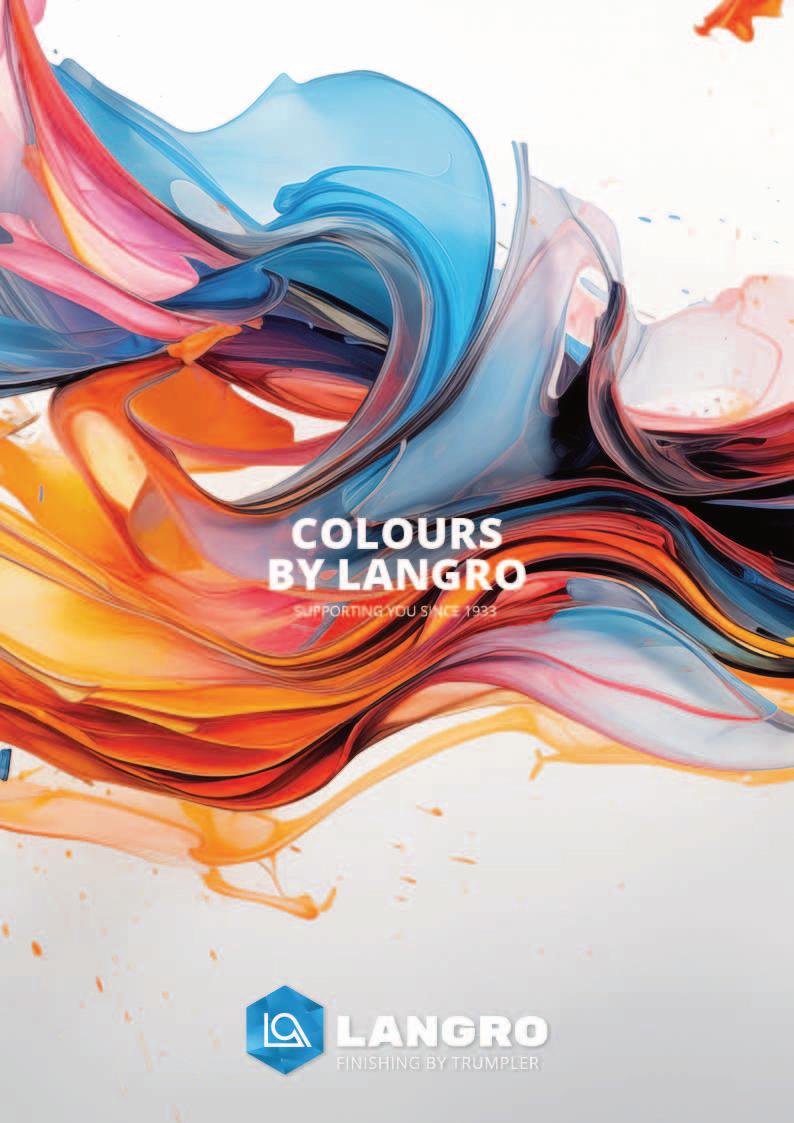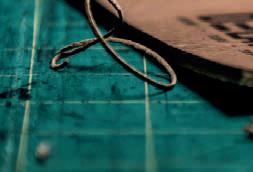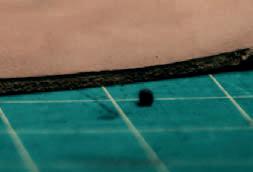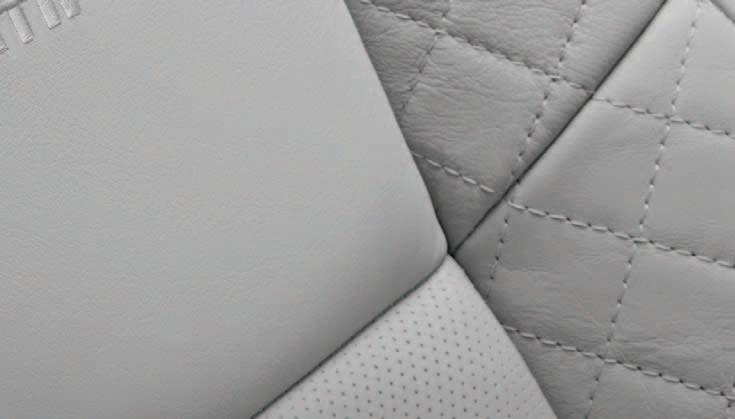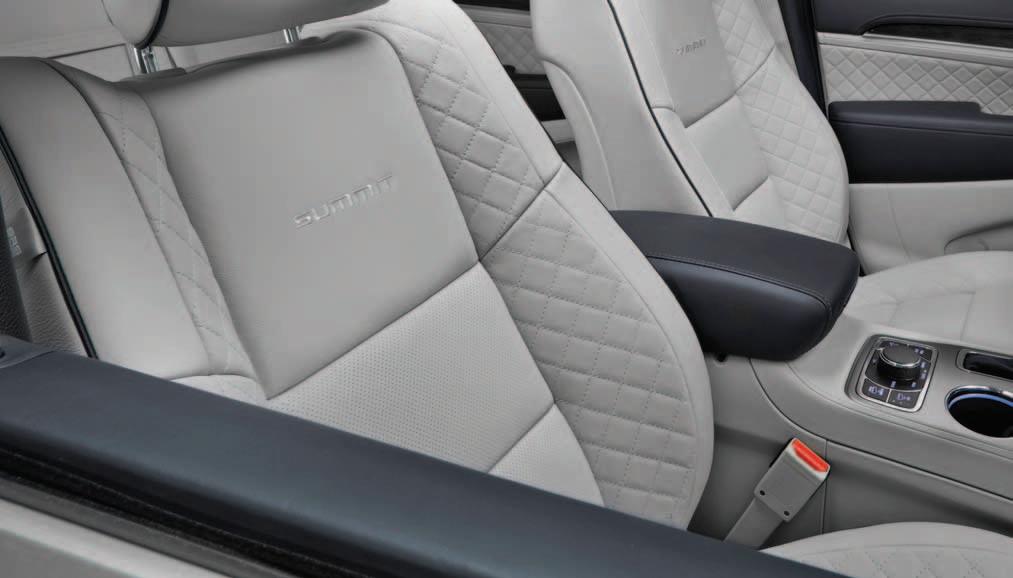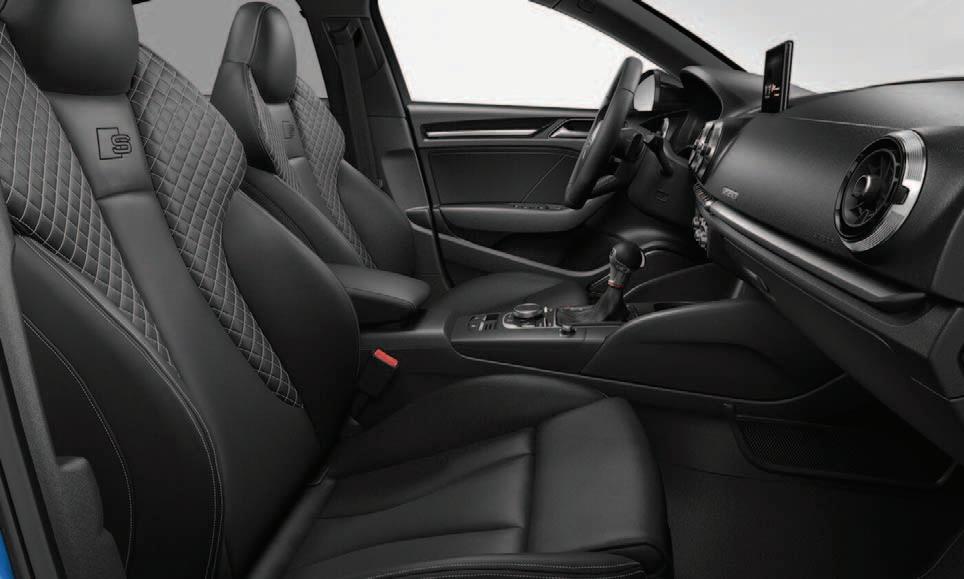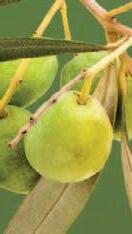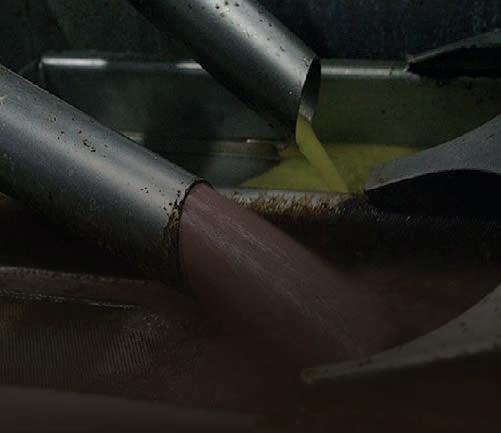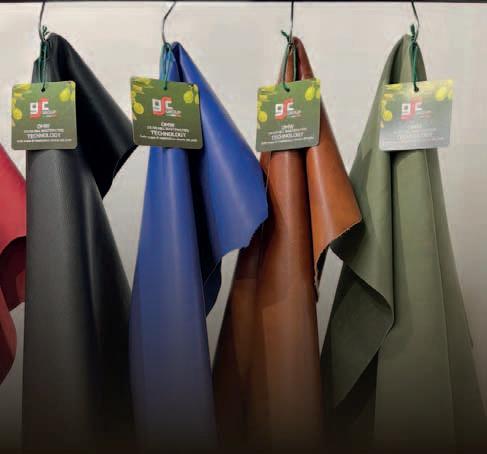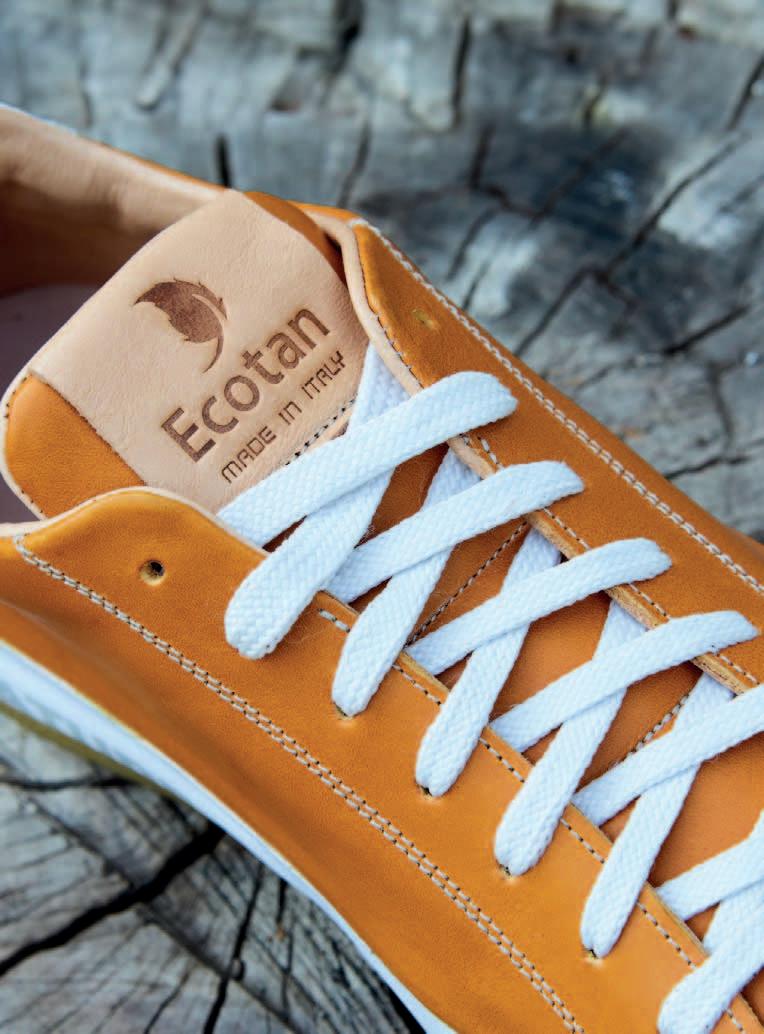Excellent –Bisphenol optimized syntans to achieve high leather quality
goods with a short lifespan. Experience has shown that an injection-moulded plastic sole on a shoe almost never lasts as long as the leather upper. That is all there is to it.
If you then take a look at the function of leather compared to its alternatives, the discussion is already at an end. Some people may not like the fact that, in the western world, leather has increasingly been lumped together with ‘conservatism’ in recent years. Leather, ‘the eternal yesterday’ and in many respects often used to symbolise the past and the outdated. But it has never been true, nor is it true today. If the material is available as the result of the refinement of a by-product, then there is hardly anything more progressive, modern and in keeping with the spirit of the times than leather. As such, it covers almost 100% of the possible ideological trends and therefore it is or would be in no way surprising if marketing departments were to rediscover its potential.
However, it is also worth noting that the anti-leather organisations have, at least to date, not dealt with this clear renaissance of the material at all. There are even quite a few of their so-called supporters who can now be seen in public wearing the very shoes made from the material they have so aggressively demonised for years.
It took a few years before leather was actually successfully put on the defensive, which is why it will probably take a little patience to develop a real turn-around. Of course, the difficult situation in the consumer goods markets does not support rapid momentum either. Nevertheless, despite the many structural problems in the industry, it should not be overlooked that the situation for leather as a material has improved, perhaps even significantly.
For the European leather industry, which is currently suffering from the greatest difficulties, long-lasting use and function must now take centre stage. It should not be concealed that there is a great deal that can go wrong in the production and in the finished versions of leather, which would counteract all the good intentions and properties of the product. Of course, many large industrial users with their economic and technical demands also bear a large share of the blame for this. Not only do they have to utilise the marketing potential, but they also have to allow the product to be used in ways that reflect the original properties of the material.
We can save ourselves the trouble of assessing the situation in the split markets at the moment. Nothing has changed and it does not appear that much will change in the short term. If split leather continues to grow in the shoe industry, it may not be too long before there is no longer a sufficient supply. It would only be dramatic to a limited extent because there are currently more than sufficient resources of very cheap, full-substance raw materials. Growth and increasing use would then also take the pressure off the market for collagen and gelatine, which has gained popularity as an alternative use in recent years, but the market for their finished products is not growing as quickly either as production
has expanded.
Boring as it may be, there is no news of note in the area of sheepskins either. The niches and specialities continue to enjoy stable demand and lamb and goat nappa do not play a noticeable role in mass production today. As a result, many raw materials are no longer being sourced and there is great potential for new and growing uses for leather here too. The fact remains that we cannot really explain why an available raw material is not being utilised.
In our next issue, we will reflect on how the election in the US turns out. In many sectors of the global economy, this can have a significant impact. Tariffs and trade restrictions are never good news overall. In China, further announcements to stimulate national demand and the economy are imminent. This too will certainly have an impact on sentiment and therefore on consumer demand. Wars and the resulting political decisions will always remain an important factor. For the moment, the world can be satisfied that the prices for energy and food have not yet been as affected as they might have been by the conflicts. Nevertheless, we should not close our eyes to the fact that surprises are possible almost every day.
In the absence of negative surprises, we believe that globally the low point in the negative trend for leather as a product has probably already been reached or is not far away. There are many reasons to believe that an improvement will occur within a time frame of 12-24 months. However, this will probably be too long to provide a lifeline for everyone.
US PERSPECTIVE
Sales of cured cattle hides for the period ending October 24 were 393,900 pieces. The figure for exports of wet blue was 177,900 pieces.
The most recent reports on hide prices showed butt-branded steers weighing 64-66 pounds up slightly at $26.25 per piece, and heavy Texas steers weighing 60-62 still at $17 per piece.
Cow hide prices remained at $14 for northern dairy cows, $13.50 for south-west dairy cows, $7 for northern branded cows and $6.50 for south-west branded cows, with weights of 5052 pounds in each case.
The source of all these figures is the US Department of Agriculture. Please note that the prices quoted represent ‘ballpark’ figures.
Cattle markets USA
T he possibility that fall is bringing renewed demand into the beef complex will serve as a stimulus to higher cash prices. Balancing the weekly slaughter rate to be sure box prices retain their stability will be important for cash prices from now until year end. Consumers will move into more highpriced middle meats as we near the holiday season.
Fiscal and trade policy will be significantly impacted by the US election and volatility should be no surprise. Cattle owners feel
Actual Slaughter Under Federal Inspection
good that last week’s decline in the live cattle futures was not joined by a parallel movement in the cash prices.
Live sales this past week have mainly been at $190 in both the north and south plains. Packers leveraged lower futures prices on Wednesday into purchases at prices that were steady to $1 lower in the north. Dressed sales were reported from $296-$300, but mainly $296-$298 or two dollars lower. While futures prices for cattle have fallen, the lean hog contracts have rallied. The idea
of spreading the cattle against pork is not without merit. Pork supplies are ample, while beef supplies are tight and expected to remain short well into the future. High-priced beef might push some consumers to switch to pork. Consumer preferences remain with beef and any movement is expected to be limited and moderate.
The choice cut-out remains well above last year’s and the choice-select spread is over $30 as the holidays approach. The fed cattle portion of the weekly slaughter continues to
LATEST HIDE AND SKIN PRICES FROM GERMANY
make a larger percentage of the total slaughter than in prior years, with cow slaughter of dairy and beef cows in decline.
Corn prices firmed at the close of last week. Harvest is nearing completion in much of the nation. Crop yields are indicating record yields. Corn basis levels in Guymon, Oklahoma, are at $0.90, basis the December contract.
GERMAN PERSPECTIVE
This week: Apart from the seasonal increase in the kill, the market situation is changing little at the moment. However, it also gives the impression that nobody is really interested in the fact that strong price changes from one side or the other would hardly have any positive effects on the leather business as such. So, the regular programmes with the established customers continue to run at more or less unchanged prices, even with unchanged quantities.
This may be sufficient information for today’s suppliers, but the fundamental question must always be asked as to whether the hides that go into production can also be successfully resold as leather in the end. The many question marks that are currently arising geopolitically certainly also play an important role. Who wants to take any additional risks in these unstable times and who can actually plan with any degree of reliability? So it seems that everyone is making up their own picture of the current situation.
The decisive factor here is, of course, that much of the information and bad news that we have been able to glean from the media for some time now ultimately relates to the past. As a supplier of raw materials, however, we have to look to the future and ask ourselves whether the negative developments of the past are also valid for the future, or whether the negative trend may already be coming to an end. However, it is very difficult to detect any real signs of improvement in the coming months.
First of all, the elections in the US will
provide an indication of whether consumer sentiment will improve and what impact possible tariffs could have. Of course, the result will also play a decisive role in the global security situation.
Sales this week were again limited to the regular programmes and the weekly random transactions. This means that volumes are not evenly distributed across all skin types in production. Heavy male hides are still finding their regular buyers and for the rest of the product, price alone determines sales opportunities. In many cases, and this obviously also applies to other provenances as has been the case for some time, the official price levels are still very different, which also makes a serious market description very difficult.
The kill: The price increases for live cattle continued unabated last week. Contrary to all the complaints from the meat industry, business appears to be much better than is being claimed. Exports may also be partly responsible for this, but in general the demand for beef appears to be much better than many people often claim. Obviously, and contrary to the hopes of NGOs, beef is not the main victim of public opinion at the moment. The kill slowly increases day by day, step by step, although this week the total number was limited owing to the public holidays. However, with a full number of production days in the week, volumes can no longer increase significantly owing to a lack of capacity. Slaughter weights are already relatively high for the time of year.
What we expect: It is difficult to imagine that the general situation will change much this week. The results of the US presidential election will be available and then we will see how the financial markets and politicians react. It usually takes some time for all this to be analysed, processed and incorporated into decisions. Otherwise, no major imbalance between supply and demand is to be expected in the coming weeks, at least in our region. Almost without speculative influences, prices are not expected to be very dynamic.
LONG READ
Leather Leaders: Chen Zhanguang, vice-president of the China Leather Industry Association
China moves upscale
Increasing demand for new-energy vehicles and for high-end shoes, bags and apparel is helping increase optimism in the leather industry in China.
What is the view of the China Leather Industry Association (CLIA) and of the leaders of CLIA member companies of the general state of the economy in China right now?
In terms of the overall direction, the situation is fine, but it is true that 2024 has been a difficult year; the economic recovery has been a little slower than we would have liked. The covid-19 pandemic had a negative effect on consumption here and consumer confidence is still weak; the recovery needs more time. There are lots of factors; it is not only about the pandemic. For example, 2022 was a good year for us, 2023 was so-so and 2024 has not been as good. But without the pandemic, consumption here would certainly have kept going up. Now people are being more careful and are keen to save money. This situation will reverse, but it will take some time.
What is CLIA’s opinion of the situation in the leather industry in China at this moment?
The domestic market was down in the first half of 2024. Since then, it has
recovered little by little and we hope that will continue into next year. We are confident of a recovery in 2025, at least in the domestic market. For the reasons mentioned, many Chinese consumers, are being careful about what they spend. And because leather shoes are relatively expensive, the shoes that some people are choosing to buy these days are athletic shoes. In footwear in general, though, the growth of imports into China is greater than the growth of domestic production. This shows the significant potential that the Chinese market offers to exporters of high-end footwear. CLIA has calculated that the average price per pair of imported shoes in China in 2022 was $30.91. This is the highest among the top 20 shoe-importing countries in the world.
On that subject, important athletic footwear brands are now making a lot of shoes from suede because the
styles of the 1970s and 1980s are popular again. Is this trend taking place in China too?
Yes, that is happening here too, which is good news for the tanners that specialise in split leather. In the last year, the prices they are able to charge have increased and demand has been very good. This is a good thing. But demand for grain leather is not so good at the moment and, of course, if you have the split you have to be able to do something with the grain side too.
Many observers in North America and Europe are surprised by how quickly the Chinese automotive industry is driving the change to electric vehicles. What does this change mean for manufacturers of automotive leather in China?
Last year, automotive manufacturers in China produced a record 30 million vehicles and 9.5 million of these were new- energy vehicles
(NEVs). That figure, 9.5 million, represents an increase of 35% year on year. This growth continued in the first half of 2024. NEVs’ share of the total, already more than 30%, will keep increasing. This is good news for the leather industry because traditional vehicles were using less and less leather, even though Chinese people in general think leather is good. Total leather production in China was down by 7% last year, but production of automotive leather increased by about 5%. NEV customers certainly like leather. Young people like these vehicles and they want them to be very comfortable and very smart inside. NEV manufacturers are using more leather to give users a good experience. I bought an NEV six years ago and it has been a very good experience, not least because it is around one-sixth of the cost to run compared to a traditional vehicle. NEVs have a good future in China.
What is CLIA’s observation of the current global situation in the supply of hides and skins?
The price of raw hides is cheap; China is the biggest buyer of hides in the world and we have a high volume of raw material coming in. The US is our biggest market for wet-salted hides and Brazil is the biggest for wet blue and crust. Argentina is another important source. Meat production is stable in China and the consumption of meat is growing higher and higher. But the style of farming is a bit different from that in Europe and North America and there are limitations in the number of hides from domestic sources. Chinese tanners need to bring in many more hides and semifinished leather from other countries. These hides offer a large area too, so they are good for making upholstery leather.
QUAKER COLOR A STEP AHEAD IN AUTOMOTIVE FINISHING
with strict criteria for previously unawarded and unproduced designs. Through “Detail,” Turkey’s leather sector aims to support new talent while reinforcing its export market.
Leather garment downturn leads to closures
Aglobal drop in demand for leather jackets, coats and other garments has led to the closure of a number of the specialist garmentleather tanneries in the Usak leather cluster in Turkey.
Specialist producers of sheepskin nappa for garment production dominate the Usak cluster, which is around 220 kilometres east of Izmir. In the course of 2024, however, a number of these facilities have closed owing to the lack of demand for the material.
Sources in Turkey have said few operators are optimistic about an upturn in fortunes in 2025. They have pointed to changes in the climate and to an increase in the use of synthetics among garment manufacturers as the main reasons.
Supplying
Quaker Color is a division of McAdoo & Allen, with roots in the leather industry for over a century
Top spot in supply chain ranking for Pasubio
Fashion and finance publication MFF has named leather manufacturer Pasubio as the number-one performer in a ‘supply chain top 20’ ranking of Italian manufacturers.
Milan-based MFF publishes the ranking each year after carrying out assessments of companies’ supply chain operations in partnership with consultancy group The European House-Ambrosetti.
It said it had put Pasubio at the top of its list for 2024 owing to the company’s impressive growth strategy.
Pasubio now runs leather-producing or leather-cutting facilities in Italy, Germany, Serbia, Mexico and South Africa and is planning further expansion in North America and China.
Around 95% of its leather is for the automotive market and its client-roster includes Maserati, Lamborghini, BMW, Jaguar Land Rover, Bentley, Rolls-Royce Motors and Porsche.
Porsche asserts it remains highly profitable
CarmakerPorsche has posted revenues of
€ 28.6 billion euros in the first nine months of the financial year, versus € 30.2 billion in the same period last year, but is confident it will meet its full-year forecasts.
Deputy chairman Lutz Meschke said: “Every race track has slower and faster sections. The same applies to a financial year. In the fourth quarter, we expect that we can accelerate and head into the final sprint to the line.
“As expected, the third quarter has been the weakest of the 2024 financial year. However, the quarterly figures and our expectations for the rest of the year mean we are confident that we will achieve our ambitious targets for the year as a whole. Even in challenging times, Porsche is financially robust and highly profitable.”
The number of overall deliveries in the first nine months was 226,026 vehicles.
“In China, we are dealing with a structural shift in demand. In addition, the global transformation towards electric vehicles is
proceeding more slowly than originally assumed. For this reason, we are reviewing our product line-up and ecosystem, as well as our budgets and cost position. All with the aim of increasing our flexibility and resilience even further,” added Mr Meschke.
The company expects to reach revenues of € 39 to € 40 billion euros by the end of the financial year.
Surplus Leather Project provides students sustainable leather access
Leather supplier Abbey England, in collaboration with The Leathersellers Foundation, has expanded its Surplus Leather Project, providing free access to high-quality, surplus leather for UK university students across design disciplines.
Launched in 2022 and praised by university partners, the initiative promotes sustainable practices and hands-on leatherworking experience.
With additional support from tanneries such as C.F. Stead, Scottish Leather Group, Sedgwick & Co, and Waltham Tannery, The Leathersellers Foundation has committed new funding to extend the project’s reach.
Leathersellers’ Master Nicholas Tusting emphasised the project’s impact, noting that students are now gaining crucial exposure to leather as a sustainable, versatile material.
University partners—including Birmingham City University, Central Saint Martins, De Montfort University, London College of Fashion, Royal College of Art, University of Northampton, and University of South Wales—have highlighted the value of these donations in enhancing students' skills and advancing sustainable design education.
Founded in 1982, Abbey England is a family-owned business. The company supplies premium English leathers, saddlery tools, and hardware, and holds a Royal Warrant to Her Majesty the Queen since 1999.
French parliament approves tax boost for repair artisans
Anational organisation representing shoe repair service providers across France, the Fédération Française de la Cordonnerie Multiservice (FFCM), has welcomed a tax change.
On October 26, France’s lower house of parliament, the Assemblée Nationale, voted in favour of lowering the rate of value added tax (VAT) for repairs of shoes and leathergoods from 20% to 5.5%.
FFCM said this lower rate of VAT represented “true recognition of the key role that our artisans play in the preservation of our savoir-faire and in the transition towards a more sustainable economic model”.
Parent group hails encouraging result for Stahl despite quiet August
Chemicals group Stahl achieved sales revenues of €687.9 million in the first nine months of this year, an increase of 1.6% compared to the same period last year.
Parent group Wendel said Stahl had achieved an encouraging result “in a context of tougher markets in automotive and luxury goods”. It pointed out that Stahl had suffered a fall of sales revenues of 4.7% in the third quarter.
Wendel said August had been “a particularly quiet month this year” owing to reduced activity in tanneries.
Volkswagen plans German factory closures
Carmaker Volkswagen is planning to shut at least three factories in Germany and cut pay by 10%, according to its union leader, reported by Reuters.
Europe's biggest carmaker has been negotiating with unions over plans to cut costs.
Daniela Cavallo, Volkswagen's works council head, said: "This is the plan of Germany's largest industrial group to start the sell-off in its home country of Germany."
The group said it faces pressure from high energy and labour costs, Asian competition, weakening demand in Europe and China and a slower-than-expected electric transition.
In the first nine months of this year, Volkswagen delivered 6.52 million vehicles, down 2.8% on the previous year. Growth in North America (+7%) and South America (+15%) was offset by declines in Western Europe (-1%) and China (-10%).
TFL launches spring-summer 2026 leather colour trends
TFL has unveiled its Spring-Summer 2026 Colour Trends Catalogue, showcasing seasonal colours for leather in fashion, accessories, and interiors.
The catalogue is split into two sections: “Wearing” for garments, footwear, and accessories, and “Living” for home interiors.
In “Wearing,” neutral tones like beige and grey are prominent, along with bold 1980sinspired metallics and glossy finishes. Fullgrain leather sees a revival with 3D textures and washed looks across various textures, from nappa to nubuck.
The “Living” section centres on “comfort,” featuring soft, natural leathers in neutral shades for furnishings. Non-uniform, genuine leather textures align with the trend of blending nature into modern interiors, favouring sustainable materials with stylish durability.
TFL’s latest catalogue offers designers a guide to fresh, versatile choices for the coming season.
‘Control over know-how’ pays off for unstoppable Hermès
As in most recent results rounds from the main luxury groups, Hermès is the one to post the most positive figures for the first nine months of 2024.
Its revenues for the nine-month period reached € 11.2 billion, an increase of 11.4% year on year.
Its leathergoods and saddlery business contributed nearly € 4.8 billion towards the
total, growing by 14.7% compared to the January-September period last year.
Ready-to-wear and accessories, the category in which Hermès includes its footwear and glove segments, achieved revenue of nearly €3.3 billion over the period, up by 12.3%.
The group said it remained fully committed to its long-term development strategy, which it described as being “based on creativity, maintaining control over know-how and singular communication”.
No further Mulberry moves for now, Frasers says
Retail
group Frasers has announced that it will make no further offer to acquire the shares it does not already hold in leathergoods brand Mulberry.
Frasers already owns 37% of Mulberry shares. At the end of September, the leathergoods company said it wanted to raise £10 million in new capital and quickly received a formal offer in which Frasers said it would pay £50 million to acquire the whole
of the company. It then submitted a revised offer on October 10, which the board of Mulberry has rejected.
Although it said it will not persist in trying to require full ownership of Mulberry for now, Frasers said it remained “a long-term supporter of the brand”. But it said it had become “increasingly concerned over the governance of Mulberry” and wanted to have representation on the board of the leathergoods brand.
Mulberry said its directors had reached the decision that the possible offer Frasers had proposed was untenable. It said the company would now focus its attention on driving the commercial performance of the business.
The injection of new capital came earlier in October from Mulberry’s majority shareholder, Singapore-based investment group, Challice Limited.
Mulberry reiterated its belief that the combination of the appointment of a new chief executive in July, Andrea Baldo, a new debt facility and the raising of the new capital
would make sure the company was on a firm footing to achieve future growth.
SLF and ALLPI partner for sustainable leather
The Sustainable Leather Foundation (SLF) has announced a new partnership with the Africa Leather and Leather Products Institute (ALLPI).
This collaboration aims to promote sustainable practices within the leather industry, particularly across Africa. SLF's Managing Director, Deborah Taylor, emphasised the importance of this partnership in supporting the leather industry’s environmental and socio-economic responsibilities. She highlighted the role of African nations in driving sustainability efforts, with SLF providing training, assessments, and audits for ALLPI members.
ALLPI’s Executive Director, Nicholas Mudungwe, expressed enthusiasm for the partnership, noting the shared commitment
to advancing sustainability in the leather sector. He underscored the value of SLF’s contributions in enhancing performance within Africa's leather industry.
ALLPI, established in 1990 and headquartered in Addis Ababa, Ethiopia, works across 10 African countries. SLF, founded in 2020, focuses on sustainability through its transparency dashboard and certification framework.
Both organisations are dedicated to improving environmental, social, and governance (ESG) standards in the global leather value chain.
Leather looks like the way forward for struggling Kering
Luxury group Kering has reported revenue of €12.8 billion for the first nine months of 2024, down by 12% compared to the same period last year.
Between January and September, the revenues that the group’s biggest brand,
Gucci, achieved reached €5.7 billion. This is a decline of 22% year on year.
For Yves Saint Laurent, revenues reached €2.1 billion, down by 10% compared to the first nine months of 2023.
Bottega Veneta provided some respite from the bad news, contributing more than € 1.2 billion to Kering’s nine-month total, an increase of 2% year on year for the Italian leathergoods brand.
The group explained that the decline in revenues at Gucci for the third quarter in isolation was even steeper, falling by 26% to reach a little more than €1.6 billion.
Kering said Gucci had been “particularly impacted by market conditions, especially in Asia-Pacific”. It added that an overhaul of Gucci’s leathergoods category is under way, with the introduction of “a host of new products” late in the third quarter.
It said Yves Saint Laurent was also “further enriching” its leathergoods lines, “with numerous product launches planned between now and the end of the year”.
Third-quarter growth for Bottega Veneta was even higher than the nine-month figure. It achieved revenues of almost €400 million in July, August and September, up by 4% year on year. Kering said Bottega Veneta’s performance “continues to be buoyed by the outstanding success of its leathergoods range”.
Marc Schebben joins TFL executive board
Marc
Schebben has been appointed to the Executive Board of TFL Ledertechnik GmbH and TFL International GmbH, joining existing members Henrik Pedersen and David Blatch.
Mr Schebben has been part of TFL's C-suite team since August 2023 and will now take on a more prominent leadership role within the company.
In his new capacity as Head of Global Human Resources, he will be responsible for shaping the corporate structure, guiding transformation processes, and overseeing human capital development. His extensive experience in change management and driving digitalisation will also play a key role in the company’s strategic direction.
Effective September 1 2024, Mr Schebben's appointment is expected to strengthen TFL's ability to innovate and maintain its marketleading position. The Supervisory Board has expressed confidence in his capacity to contribute to TFL’s continued success.
IULTCS launches new scientific newsletter
The International Union of Leather Technologists and Chemists Societies (IULTCS) is set to release its inaugural scientific newsletter on 28 October 2024.
This new publication aims to provide the latest advancements in leather research, regulatory updates, technological innovations, and standardised methods specific to the leather industry.
The
is designed to keep industry
professionals, researchers, and stakeholders informed of the rapidly evolving field of leather science. By offering up-to-date insights, IULTCS hopes to foster greater collaboration and awareness within the global leather community.
This initiative reflects the organisation’s commitment to advancing leather technology and addressing emerging industry challenges through scientific knowledge and innovation.
MILE Museum showcases leather's sustainable evolution
The MILE - Museum of Interactive Leather Experience, Italy’s first interactive museum dedicated to leather processing, is set to open in 2025 in the heart of the Veneto Leather District. The museum will showcase the historical and technological evolution of the leather industry in the Chiampo Valley, with a strong emphasis on sustainability and innovation.
A collaboration between the Veneto Leather District and Acque del Chiampo Società Benefit, MILE Museum has secured approximately €120,000 in regional funding from the PR Veneto FESR 2021-2027 programme. It also benefits from the support of leading companies in the leather sector, including Gruppo Mastrotto, GSC Group, Pasubio, and OSMO HTF, who are participating as "Founders" and have been instrumental in realising the museum's vision.
The museum will feature immersive, interactive exhibits using advanced technologies such as video mapping to engage visitors in the leather industry’s rich history, creative potential, and sustainability efforts. Designed to cater to students, local residents, international visitors, and industry professionals, MILE Museum aims to provide both educational and experiential value.
Following its opening in 2025, the museum plans to expand with educational programmes, temporary exhibitions, and partnerships with international leather museums.
Leather companies are winners at Italy’s Sustainability Awards
Two leather-sector companies were amont the winners at Italy’s 2024 Sustainability Awards. This year’s edition was the fourth for these national awards.
Leather manufacturer Gruppo Dani was named as one of the winners for environmental management for its commitment to facing climate change and promoting responsible use of natural resources.
In parallel, footwear and accessories group Tod’s won in a category called institutional framework compliance.
The presentations took place at an event in Milan on October 17.
EUDR: proposed postponement clears important hurdle
Key decision-making body the European Council has agreed to a proposed delay
on the European Union Deforestation Regulation (EUDR) coming into force.
The European Council, which consists of senior ministers from all 27 member states of the European Union, met in Brussels on October 16 to discuss a number of issues, including EUDR. It agreed on the proposal to postpone EUDR’s date of application by 12 months.
There still needs to be agreement on this from the European Parliament, but if that agreement emerges, the obligations stemming from the regulation will be binding from December 30, 2025, for large operators and traders, and from June 30, 2026, for small enterprises.
The Council said it hopes to have this agreement from the European Parliament before the end of 2024.
It said: “The targeted amendment will not affect the substance of the rules, which is to minimise the EU’s contribution to deforestation and forest degradation
worldwide, by allowing only deforestation-free products to be placed on the EU market, or exported from the EU.”
It explained that deforestation-free products are products that have been produced on land that has not been subject to deforestation or forest degradation since the end of 2020 at least.
Adidas announces leadership change in global sales
Arthur Hoeld, Executive Board member responsible for Global Sales at adidas AG, will leave his position on 31 October 2024, following a mutual agreement with the company’s Supervisory Board.
Mr Hoeld, who has been with adidas since 1998, decided not to extend his term beyond March 2026. During his tenure, he held various leadership roles, significantly contributing to the company’s growth.
Mathieu Sidokpohou, currently Managing Director for Europe, will succeed Mr Hoeld as
Executive Board member for Global Sales starting 1 November 2024. Mr Sidokpohou joined adidas in 2020 and has played a key role in driving the company’s success in Europe. CEO Bjørn Gulden praised Mr Sidokpohou’s experience, highlighting his contribution to the brand’s recent European growth.
As of November, adidas' Executive Board will consist of Bjørn Gulden (CEO), Harm Ohlmeyer (CFO), Michelle Robertson (Global HR), and Mathieu Sidokpohou (Global Sales).
ASIA
Kering takes innovation programme to Saudi Arabia
Luxury group Kering has signed a new partnership with the Fashion Commission of Saudi Arabia. At the end of October, the partners jointly launched a Saudi edition of the Kering Generation Award.
The group introduced the Kering Generation Award in 2017 in a bid to find innovations that will help the fashion industry lower its environmental impact. Previous editions of the award have focused on promoting and celebrating innovation in China and Japan.
Working with the Fashion Commission of Saudi Arabia, part of the ministry of culture, this new edition will seek to promote sustainability and innovation in the fashion industry in Saudi Arabia, aiming “to drive meaningful change and elevate sustainable fashion initiatives”.
As part of the award, Kering has said it will strengthen its commitment to “fostering visionary talent and advancing sustainable solutions that minimise the environmental and social impact of retail and wholesale practices”.
This first Saudi edition of the programme will specifically seek to identify start-ups that Kering believes can have an impact on customer engagement, the circular economy and water protection.
The group’s chief sustainability officer, Marie-Claire Daveu, said: “We firmly believe that the future of luxury is built on sustainable innovation and on engaging the next generation.
This partnership reflects our commitment to driving meaningful change in the Saudi fashion industry.”
Design-A-Bag competition 2025 now open
The 2025 Design-A-Bag (DAB) competition, an international event for leather bag designers and design students, is now open for submissions. Organised annually by Fashion Access since 2007, the competition provides a platform for designers worldwide to showcase their innovative work to a global audience of industry professionals.
This year’s theme, Artisanal Intelligence, encourages participants to focus on craftsmanship and the human touch in their designs, using leather as the primary material.
Designers are tasked with creating functional yet emotionally resonant bags that reflect a blend of tradition and innovation.
Finalists will be sponsored to attend Fashion Access 2025 in Hong Kong, held alongside APLF Leather and Materials+, a major exhibition for the leather and fashion manufacturing industries. The overall winner will receive a 4-week design course at Arsutoria School in Milan, including a EUR 1,000 accommodation allowance.
Submissions are open until 13 January 2025.
Pick up in orders for Vietnam’s footwear and garment industries
Vietnam’s footwear industry is on track to reach its export target of $27 billion in 2024, according to local press, after a recovery in orders.
Exports between January and September are estimated at $20 billion.
Phan Thanh Xuân, general secretary of the LEFASO – the Vietnam Leather, Footwear and Handbag Association - said many manufacturers have orders until the end of this year and into the first quarter of 2025.
The garment industry is also recovering, according to the Vietnam Textile and Apparel Association. This is due to orders shifting from other countries such as Bangladesh, rather than a general increase in demand, it noted.
Exports to Hong Kong boost UK beef
FromJanuary to August, UK beef exports were 10% above 2023 export volumes, totalling 72,900 tonnes, according to the UK’s Agriculture and Horticulture Development Board (AHDB).
The EU is the UK’s main destination for beef exports, accounting for 85% of volumes.
EU beef production is expected to decline marginally in 2024 and again in 2025, which may offer opportunities for UK product, said the body.
Non-EU export destinations for UK beef have been a primary driver for trade in 2024. Hong Kong holds the greatest share with 4,100 tonnes, up 67% compared with the same period in 2023.
In terms of imports, from January to August, UK beef imports totalled 157,830 tonnes, an increase of 5% compared with the same period last year.
AMERICAS
Minerva foods completes acquisition of Marfrig assets
Minerva Foods has finalised its acquisition of key assets from Marfrig Global Foods, enhancing its position in the South American meat processing industry. The deal, which includes processing plants and distribution centres in strategic locations, strengthens Minerva's operations in Brazil, Argentina, and Uruguay.
The acquisition, first announced earlier this year, has received all necessary regulatory approvals. According to CEO Fernando Galletti
de Queiroz, the integration of Marfrig's assets is expected to improve supply capabilities and operational efficiency.
Minerva, a significant exporter of fresh meat in South America, anticipates that the acquisition will enhance its export capabilities to markets in Asia, Europe, and the Middle East. The company also plans to implement environmentally friendly practices at the newly acquired facilities.
Industry analysts view the acquisition as a strategic response to rising global protein demands and ongoing trends in market consolidation within the meat processing sector.
Bader expands in Jalisco
German automotive leather supplier Bader has announced an investment of 321.6 million pesos ($16 million) to expand its operations in Jalisco, Mexico. This development includes a new 14,000 m² facility in Lagos de Moreno, enhancing Bader's established presence in the region since 2014. The expansion is expected to raise production to 11,000 vehicle interiors weekly, targeting 500,000 annually, and will create 400 new direct jobs in the area. Roberto Arechederra, Jalisco’s Secretary of Economic Development, underscored the significance of this investment, which will support regional infrastructure and fuel local economic growth. "This expansion of Bader reaffirms the confidence of international companies in the talent and competitiveness of the state," he stated.
Germany remains one of the top three investors in Jalisco, with investments totalling 1.245 billion dollars in recent years.
Timeless leather redefines the Air Force 1
Nike is doubling down on premium leather upgrades for the Air Force 1, honouring its legacy by blending timeless style with modern luxury.
The Air Force 1 '07 LV8 "Since 1982" Sunset and the upcoming Air Force 1 Low "3X Celebration" showcase distinct leather designs, reimagining the classic sneaker with intricate details and high-quality craftsmanship.
The "Since 1982" Sunset edition revisits the charm of vintage footwear with a brown leather upper that sports a rich patina, evoking a sun-aged look. Complete with a retro tongue tab that references the AF1’s origin, this model captures a sense of heritage and quality.
Meanwhile, the Air Force 1 Low "3X Celebration", slated for a March 2025 release, draws on decades of AF1 design history, combining multiple leather combinations from past white AF1 iterations. Featuring elements like Italian leather, croc print, patent, and woven details, this all-white iteration offers a layered homage to the silhouette’s diverse legacy, tied together by signature tumbled leather accents.
These releases reflect Nike’s commitment to enhancing the Air Force 1 with rich leather
finishes, proving that this icon remains at the forefront of design evolution in sneaker culture.
At last, the Higg twigs that leather deserves better
Environmental impact assessment tool the Higg Materials Sustainability Index (MSI) has updated its score for leather, attributing much lower impacts to the material.
The leather industry has been campaigning since 2020 to have the Higg MSI reflect more fairly the environmental impact of leather. Now, in an October 2024 update, it gives new average values for bovine leather showing environmental impacts that are lower by between 55% and 67% than previous scores.
As a result, the Higg MSI scale, which previously gave bovine leather a global warming potential score of 36.8 points, has been amended to attribute 14.6 points to the material. This is a reduction of more than 60%.
Using lifecycle assessment (LCA) information from the Leather Working Group and Leather Naturally, specialist leather industry-focused environmental consultancy Spin 360 submitted detailed data for leather’s impact to the Higg Index.
In its submission, Spin 360 used data collected from 45 manufacturing facilities across 18 countries for leather destined for use in footwear, automotive, leathergoods and upholstery.
The October update shows that the Higg has now adopted these more accurate figures as a new average for bovine leather.
The leather industry bodies involved in this effort have reacted by saying this significant shift advances real change, promoting “a more nuanced understanding of bovine leather as a sustainable material choice”.
Tapestry to appeal after Capri court set-back
Acourt has granted a petition from the US Federal Trade Commission (FTC) to block attempts from leathergoods and footwear group Tapestry to acquire rival group Capri Holdings.
Tapestry, parent group of Coach, Kate Spade and Stuart Weitzman, first expressed its intention to acquire Capri in 2023. Capri’s brands are Michael Kors, Versace and Jimmy Choo.
In April this year, the FTC took steps to block the acquisition, which it said would have a negative effect on consumers because of a lack of competition on price, discounts and promotions, innovation, design, marketing, and advertising.
Tapestry has consistently disputed this and has argued its case in court. However, on October 24, a court in New York granted the FTC’s request for a preliminary injunction, stopping the deal from going ahead.
In response, Tapestry said the decision was disappointing. It said: “We face competitive pressures both from lower- and higher-priced products and continue to believe this transaction is pro-competitive and pro-
consumer. We intend to appeal the decision, consistent with our obligations under the merger agreement.”
New partnership boosts sustainability in Brazilian leather
The Centre for the Brazilian Tanning Industry (CICB) and the Institute for Agricultural and Forestry Management and Certification (Imaflora) have announced a partnership to promote sustainability in Brazil’s leather and meat value chains.
This three-year agreement will implement CICB’s Raw Material Guide and Imaflora’s "Boi na Linha" protocol (a unified system of monitoring, reporting, and verification developed by Imaflora) to improve traceability and responsible sourcing.
The collaboration will provide training and raise awareness among tannery professionals, cattle ranchers, and meatpackers. According to CICB, 80% of Brazil’s leather production is aimed at export markets with increasing demands for sustainable and traceable supply chains. Imaflora highlights that the initiative addresses issues like deforestation, labour standards, and land use, aiming to strengthen security and credibility in leather sourcing.
Through joint efforts in media and communication, CICB and Imaflora will engage industry stakeholders in best practices to help Brazilian leather meet global sustainability standards.
‘Visionary
advocate’ for leather dies
TheLeather and Hide Council of America (LHCA) has announced the death of Shep Hermann, chief executive of the Hermann Oak Leather Company in St Louis, Missouri.
Mr Hermann was the fourth-generation leader of the company, which makes veg- and chrome-tanned finished leather. LHCA described him as “a persistent and visionary advocate for the leather and hide industry”.
He studied mechanical engineering at Princeton and also attended the University of Virginia’s Darden School of Business before returning to St Louis to take over the running of the family firm in 1985.
He used his knowledge to introduce leanmanufacturing principles to the Hermann Oak tannery, but also developed in-depth knowledge of, and became an authority on, traditional veg-tanning methods.
Belt manufacturer stands out in Guatemala
Leather
belt manufacturer Tata Accesorios Globales has been named as a finalist in Guatemala’s Exporter of the Year competition. Tata Accesorios claims to be the largest producer of belts in the world.
Chief executive, Rodrigo Toledo, said being named as a finalist in the competition, which is run by national export promotions agency Agexport, was an opportunity to offer recognition to the company’s workforce “for the magnificent job they are doing” and celebrate the company’s achievement with them.
Mr Toledo said the company stood out because few businesses in Guatemala have earned a reputation for producing highquality leather products.
He added that to have achieved what Tata Accesorios has done was remarkable, especially because Guatemala does not have the raw materials required for the volume or quality of product the company is making. This has led the company to source leather from India, China and other countries around the world.
Its principal export market is the US, but it is currently exporting its belts to 40 countries globally, he said.
AFRICA
Emirates donates upcycled leather backpacks to South African teachers
Dubai based Emirates Airlines recently recognised 100 South African teachers with backpacks from its limited-edition ‘Aircrafted by Emirates’ collection, created from upcycled materials from its A380 and 777 aircraft.
Presented at two schools in Alexandra, Sandton, the backpacks, crafted from FirstClass seat leather and produced at the Emirates Engineering facility in Dubai, also included a leather notebook, a tea tumbler, and teas from Dilmah.
Afzal Parambil, Emirates' Regional Manager for Southern Africa said: “Education, much like travel, broadens the mind and brings immeasurable value to society at large. Celebrating these shared values, we wanted to show our appreciation for the teachers in one of Johannesburg’s most impoverished townships. We are proud to enrich the communities we serve.”
Italian leather technology event launches in Tunisia
Italian Ambassador to Tunisia, Alessandro Prunas, inaugurated the event “Italian technology, key to creativity” in Tunis, highlighting collaboration in the leather industry. He noted Italy’s dominance in leather processing, exporting over 65% of its machinery and producing 62% of Europe’s tanned leather.
Mr Prunas emphasised Italy as a key partner for Tunisia, with 70% of the country's major leather companies focused on exports and benefiting from Italian investments in 22% of Tunisian firms in the sector. The event, organised by the Ice Agency Tunis with ASSOMAC and UNIC, aims to enhance bilateral cooperation with a focus on technical training and sector promotion.
The agenda includes a technical seminar and B2B meetings with 13 Italian companies and 160 local operators.
On the second day, the delegation will visit local model companies and the Centre National du Cuir et de la Chaussure (CNCC) laboratories.
OCEANIA
Australia urges US to maintain kangaroo leather imports
Australian leaders and industry advocates are pressing US senators to reconsider a proposed ban on kangaroo leather imports, arguing that the measure could harm Australia’s $200 million kangaroo leather industry and disrupt sustainable wildlife management.
The bipartisan movement among Australian politicians highlights the role of regulated kangaroo harvesting in supporting rural
economies, managing kangaroo populations, and reducing environmental impact compared to traditional livestock farming.
Ray Borda, president of the Wild Game Industry Council, stressed that kangaroo harvesting is closely monitored and essential for managing population levels, which helps reduce road accidents and mitigate strain on natural resources. With around 36 million kangaroos in harvest areas and approximately 1.3 million harvested last year under strict oversight, former wildlife biologist Neal Finch asserts that the industry is sustainable and does not threaten kangaroo populations.
Australian diplomats, along with NSW state leaders, are actively advocating against the US ban, arguing that the kangaroo leather trade supports regional jobs and environmental balance. The Department of Foreign Affairs has confirmed its support for the international trade of ethically produced animal products and continues to monitor developments around the US bill.





